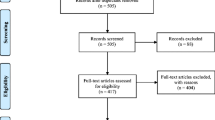Abstract
Hair loss stemming from different types of alopecia, such as androgenic alopecia and alopecia areata, negatively affects over half the population and, in many circumstances, causes serious psychosocial distress. Current treatment options for alopecia, such as minoxidil, anthralin, and intralesional corticosteroids, vary efficacy and side effect profiles. It is known that low-level laser/light therapies (LLLT), or photobiomodulations, such as the US FDA-cleared HairMax Lasercomb®, He-Ne laser, and excimer laser, are relatively affordable, user-friendly, safe, and effective forms of treatment for hair loss. While less is known about the effectiveness of fractional lasers for combating hair loss, research suggests that by creating microscopic thermal injury zones, fractional lasers may cause an increase in hair growth from a wound healing process, making them potential therapeutic options for alopecia. A literature review was performed to evaluate the effectiveness of fractional lasers on hair regrowth. The specific fractional laser therapies include the 1550-nm nonablative fractional erbium-glass laser, the ablative fractional 2940-nm erbium:YAG laser, and the ablative fractional CO2 fractional laser. Additional randomized controlled trials are necessary to further evaluate the effectiveness of the lasers, as well as to establish appropriate parameters and treatment intervals.
Similar content being viewed by others
References
Narurkar VA (2009) Nonablative fractional laser resurfacing. Dermatol Clin 27(4):473–478 vi
Preissig J, Hamilton K, Markus R (2012) Current laser resurfacing technologies: a review that delves beneath the surface. Semin Plast Surg 26(3):109–116
Gold MH (2010) Update on fractional laser technology. J Clin Aesthet Dermatol 3(1):42–50
Lee GY, Lee SJ, Kim WS (2011) The effect of a 1550 nm fractional erbium-glass laser in female pattern hair loss. J Eur Acad Dermatol Venereol 25(12):1450–1454
Kim WS, Lee HI, Lee JW, Lim YY, Lee SJ, Kim BJ et al (2011) Fractional photothermolysis laser treatment of male pattern hair loss. Dermatol Surg 37(1):41–51
Cho S, Choi MJ, Zheng Z, Goo B, Kim DY, Cho SB (2013) Clinical effects of non-ablative and ablative fractional lasers on various hair disorders: a case series of 17 patients. J Cosmet Laser Ther 15(2):74–79
Eckert MM, Gundin NL, Crespo RL (2016) Alopecia areata: good response to treatment with fractional laser in 5 cases. J Cosmo Trichol 2:108. doi:10.4172/2471-9323.1000108
Yoo KH, Kim MN, Kim BJ, Kim CW (2010) Treatment of alopecia areata with fractional photothermolysis laser. Int J Dermatol 49(7):845–847
Tsai YC (2016) Alopecia areata treated with fractional photothermolysis laser: a case report. J Am Acad Dermatol 74(5):AB132
Ke J, Guan H, Li S, Xu L, Zhang L, Yan Y (2015) Erbium: YAG laser (2,940 nm) treatment stimulates hair growth through upregulating Wnt 10b and beta-catenin expression in C57BL/6 mice. Int J Clin Exp Med 8(11):20883–20889
Bae JM, Jung HM, Goo B, Park YM (2015) Hair regrowth through wound healing process after ablative fractional laser treatment in a murine model. Lasers Surg Med 47(5):433–440
Yalici-Armagan B, Elcin G (2016) The effect of neodymium: yttrium aluminum garnet and fractional carbon dioxide lasers on alopecia areata: a prospective controlled clinical trial. Dermatol Surg 42(4):500–506
Issa MC, Pires M, Silveira P, Xavier de Brito E, Sasajima C (2015) Transepidermal drug delivery: a new treatment option for areata alopecia? J Cosmet Laser Ther 17(1):37–40
Paus R, Foitzik K (2004) In search of the “hair cycle clock”: a guided tour. Differentiation 72(9–10):489–511
Plikus MV, Chuong CM (2008) Complex hair cycle domain patterns and regenerative hair waves in living rodents. J Investig Dermatol 128(5):1071–1080
Avci P, Gupta GK, Clark J, Wikonkal N, Hamblin MR (2014) Low-level laser (light) therapy (LLLT) for treatment of hair loss. Lasers Surg Med 46(2):144–151
Stefanato CM (2010) Histopathology of alopecia: a clinicopathological approach to diagnosis. Histopathology 56(1):24–38
Jimenez JJ, Wikramanayake TC, Bergfeld W, Hordinsky M, Hickman JG, Hamblin MR et al (2014) Efficacy and safety of a low-level laser device in the treatment of male and female pattern hair loss: a multicenter, randomized, sham device-controlled, double-blind study. Am J Clin Dermatol 15(2):115–127
McElwee KJ, Shapiro JS (2012) Promising therapies for treating and/or preventing androgenic alopecia. Skin Therapy Lett 17(6):1–4
Varothai S, Bergfeld WF (2014) Androgenetic alopecia: an evidence-based treatment update. Am J Clin Dermatol 15(3):217–230
Brzezinska-Wcislo L, Bergler-Czop B, Wcislo-Dziadecka D, Lis-Swiety A (2014) New aspects of the treatment of alopecia areata. Postepy Dermatol Alergol 31(4):262–265
Rangwala S, Rashid RM (2012) Alopecia: a review of laser and light therapies. Dermatol Online J 18(2):3
Garg S, Messenger AG (2009) Alopecia areata: evidence-based treatments. Semin Cutan Med Surg 28(1):15–18
Alsantali A (2011) Alopecia areata: a new treatment plan. Clin Cosmet Investig Dermatol 4:107–115
Wikramanayake TC, Villasante AC, Mauro LM, Nouri K, Schachner LA, Perez CI et al (2013) Low-level laser treatment accelerated hair regrowth in a rat model of chemotherapy-induced alopecia (CIA). Lasers Med Sci 28(3):701–706
Author information
Authors and Affiliations
Corresponding author
Ethics declarations
Conflict of interest
The authors declare that they have no conflict of interest.
Ethics statement
Not required. The manuscript does not contain clinical studies or patient data.
Informed consent
Not required. The manuscript does not contain clinical studies or patient data.
Source of funding
This research received no specific grant from any funding agency in the public, commercial, or not-for-profit sectors.
Rights and permissions
About this article
Cite this article
Perper, M., Aldahan, A.S., Fayne, R.A. et al. Efficacy of fractional lasers in treating alopecia: a literature review. Lasers Med Sci 32, 1919–1925 (2017). https://doi.org/10.1007/s10103-017-2306-7
Received:
Accepted:
Published:
Issue Date:
DOI: https://doi.org/10.1007/s10103-017-2306-7




